|
I haven’t written in a few weeks because it has taken me awhile to reflect on all I have learned and experienced in the past month while studying the Holocaust. Summarizing these learnings, and sharing them respectfully and appropriately, is daunting. Here is my best effort. 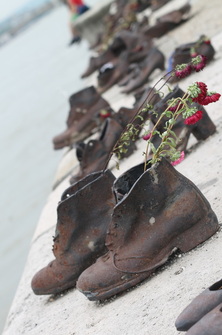 The Hungarian Holocaust While my parents were visiting last month, we spent an afternoon learning about Jewish history in Budapest and the Holocaust from a Hungarian perspective. We first reflected on the Holocaust memorial shoes along the Danube, in memory of the Jewish victims shot into the river by the Arrow Cross militiamen in 1944-45. We then made our way to the Jewish district to the Dohány Street Synagogue. It is the second largest synagogue in the world—and my first time visiting one. The Synagogue's Catholic influence is evident, as the Jews who built it desired acceptance and mutuality from their Catholic neighbors. However, all hope of coexistence was lost with the beginning of the 20th century. Due to a variety of factors, including Hungary's eager collaboration with the Nazi regime, Hungarian Jews, in particular, suffered during the Holocaust. Nearly 600,000 lives were lost (1). Before deportations to Auschwitz began, Budapest’s Jewish Quarter—surrounding the Dohány Street Synagogue—was walled up and turned into a ghetto. Many Jews lost their lives here due to poor conditions, starvation, and disease. While most synagogues don't have cemeteries, the Dohány Street Synagogue has one marking the grave of over 2,000 Jews who died in the ghetto. Just past the cemetery, there is a memorial garden with a large, metal weeping willow with the structure of an upside down menorah. The names of victims are etched on each leaf. There are additional memorials as well as a symbolic grave honoring the handful of non-Jews who risked their lives to save their persecuted neighbors. One such hero is Carl Lutz, a Swiss diplomat who used his position to bring over 60,000 Jews to safety during the war. 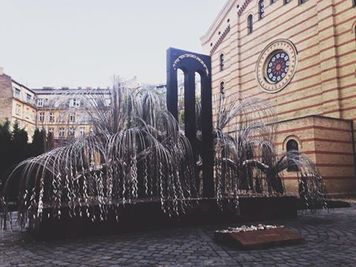 Before World War II, 25 percent of Budapest was Jewish. Today, only 1 percent is. Our tour at the Synagogue was a led by a student my age. She did an incredible job educating us on Budapest’s Jewish history as filling us in on the present situation. A Jew herself, she shared her thoughts on the current political and economic situation in Hungary. Tragically, she expressed a concerning growth in anti-Semitism in recent years that has led many of the few Jews left in Budapest to practice at home. According to her, only around 30 people regularly worship at the Synagogue. She also mentioned her generation’s general discontentment with the Orbán government, leading many young people to leave Hungary and seek opportunities abroad. Auschwitz Fast forward a week, and wet gravel is crunching beneath my feet as I walk in the footsteps of a million ghosts. At the beginning of November, we spent a weekend in Krakow, Poland, site seeing and learning about the city’s history—especially in regards to its Jewish heritage. Before World War II, Poland had Europe’s largest Jewish population at 3.5 million (1). During the Holocaust, the Nazis murdered 4.5 million Jews in Poland, and by the end of the war, only 300,000 Polish Jews remained (1). Similar to Budapest's story, today only a mere 10,000 Jews live in Poland. One day of our time in Poland was spent visiting the largest of Nazi Germany’s concentration camps, Auschwitz-Birkenau. Auschwitz functioned as a labor and extermination camp for the Nazis from 1942 to 1945 and is made up of two camps, Auschwitz I and Auschwitz II (also known as Birkenau). 1.3 million people were deported to Auschwitz, and although statistics are disputed, it is estimated that 1.1 million people were killed there, 960,000 of them Jewish, with 430,000 of those being Hungarian Jews (1). All of the Hungarian Jews arrived within a ten-week period in the summer of 1944, thanks to the efficient compliancy of Hungarian officials and citizens (2). Our visit began at Auschwitz I, the originally camp, which held an average of 14,000 prisoners at a time. At the camp's gate, we were greeted by the ironic “Arbeit Macht Frei" (Works Bring Freedom) sign. Many of the buildings at Auschwitz were made of brick and survived the war, however several have been converted into exhibits today. Our tour guide led us through many, highlighting different aspects of the Holocaust and life at Auschwitz. One focused on how prisoners were killed, another on the living conditions and everyday life for prisoners in the camp, and one on the plunder of personal belongings. Another block highlighted extermination and had a chilling model of a crematorium. It walks visitors through the process, showing where the victims would enter, undress, be exterminated by the Zyklon-B poison in the “showers,” and then—now corpses—be taken by the elevators to the crematorium. When all four gas chambers at Auschwitz-Birkenau were in use, it would take roughly 20 minutes to kill 8,000 people (1). One deeply disconcerting aspect of the whole process is the role of the Sonderkommandos, the Jewish prisoners forced to work in the chambers. Sonderkommandos were ordered to remove the corpses’ gold teeth and shave their hair, to be sold, before putting them in the ovens. It was not uncommon for Sonderkommandos to come across their family members or friends during this process. After a few months, the Sonderkommandos were gassed and a new group was brought in to replace them. Next, we went to Block 11. Used to punish prisoners through torture, Block 11 is also known as “Death Block” since no one ever left alive. Block 11 holds torture rooms, a starvation cell (for prisoners sentenced to death by starvation), a dark cell (for isolation in darkness), and standing cells (where prisoners were forced to stand in crowded cells for hours at a time). Block 11 is also where the Nazis first tested out Zyklon B on Russian prisoners-of-war. Executions of political prisoners, religious leaders, and resistance leaders were held in the courtyard between Blocks 10 and 11. Auschwitz also has several exhibits that highlight the different nationalities and people groups that suffered at the camp. We visited Block 18 which does a fantastic job of telling the story of the Hungarian Holocaust. Our last stop at Auschwitz I was the camp gas chamber and crematorium that could kill up to 700 people at a time. Still intact, although partly rebuilt, we walked through the changing room, to the “showering” room where the gassing took place, and finally to the ovens. To stand in the physical space where thousands of people spent their last moments on earth was incomprehensible. To try to imagine what life was like here seventy years prior, when naked, frightened people breathed their last in this musty room... a room strategically, efficiently designed to destroy them. How does one begin to understand it? Outside of the crematorium was the house of Rudolf Höss, commander of Auschwitz, where he lived with his family during the war years. After the war ended, Höss was prosecuted and hanged just between the chambers and his former home. 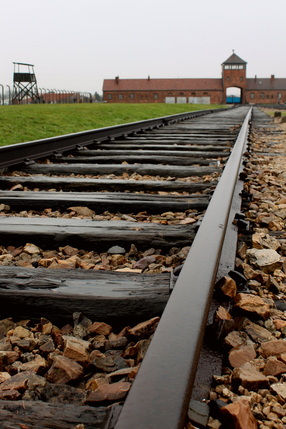 Birkenau Following Auschwitz, we made a short trip to the nearby camp of Birkenau. In 1941, when the Nazis realized Auschwitz was too small to meet their needs, they built Birkenau. At any given time, Birkenau held up to around 100,000 inmates. Upon arriving at Birkenau, we entered through the iconic main gate—where the cattle cars passed under—and walked along the tracks to the landing platform. The platform is where hundreds of thousands of people got their first glimpse of the camp, that is, if they survived the treacherous journey at all. Deportees were loaded in overcrowded cattle cars with no food, water, and little air circulation for days, sometimes up to a week at a time. By the time they finally arrived, many had already passed away. So arriving at a concentration camp, it is reported, often brought a sense of relief. The “selection” or “dividing” process often took place on the platform immediately after unloading the living and dead from the cattle cars. Doctors evaluated the prisoners and decided if they were either fit to work, and sent to the left, or unfit, and sent to the right—to immediate death. At this platform, families were forever torn apart. Our tour guide reported that around 80% of victims were gassed immediately upon arrival, walking straight from the platform to the chambers. As the doomed walked to their death, those fit to work were “marched off to the quarantine barracks, where they were initiated into a series of rituals designed to destroy their identity and their personality and thus their capacity for resistance” (3, pg. 34). We continued walking along the railroad tracks, the same path those sentenced to death would have walked, to the gas chambers. It’s hard to put an experience like this into words. My soul was silenced with a dulled anguish, an overwhelming somberness, and a holy reverence. It’s as if I could feel the gravity of this loss of life, the multitude of mourning on behalf of the victims and their offspring—future generations that never got to exist. It was as if I could sense God’s silent presence hovering over this sacred, scarred ground. At the end of the gravel path, we reached the ruins of two gas chambers and crematoriums. The Germans destroyed them at the end of the war, and all that is left now are appropriately grotesque gnarls of cement and metal, twisted in a ramshackle mess and overgrown with grass and moss. Next to the ruins is a memorial in several languages, representing the different countries the victims came from and the various languages they spoke. Despite Birkenau's large size, the Nazis destroyed what they could before the war ended—dismantling wooden barracks or burning them to the ground. But thanks to the reconstruction of some barracks, it was still possible to get a sense of what the camp looked like during the war. We visited one barrack, that did survive the war, where prisoners slept. These barracks held around 700 people and were filled with three-level wooden bunks that slept four to five people on each level. Our guide shared that the most sought after level on the bunk was the middle one. The roof leaked, leaving prisoners on the top bunk vulnerable to rain and snow, while those on the bottom level slept on the muddy floor in the company of vermin. The barrack had a small stove for heating, yet the inmates never received the coal they were supposed to be issued. We also visited a reconstructed wooden barrack which housed latrines and washrooms. The row of toilets were exposed, providing no privacy and fostering humiliation. Nazis were afraid to enter the barrack because of the unsanitary conditions and risk of disease, so it became the center of resistance movements and the camp's black market (1). Conditions are reported to have been worse at Birkenau than Auschwitz—horrors brought to life by Otto Friedrich in his book The Kingdom of Auschwitz. Just one example is the grueling starvation hundreds of thousands faced. Starvation and severe malnutrition caused rare diseases to crop up. Allegedly, even cases of cannibalism were not uncommon in Birkenau. As Friedrich puts it, “they would beat each other to death for food… they were no longer human beings” (3, pg. 12-13). The Reality of the Holocaust I’ve studied genocide, and specifically the Holocaust, before. I've visited the Nazi concentration camp of Dachau and the Killing Fields of Cambodia. I've surveyed the lush rolling hills of Burundi—once the backdrop of genocide in the 1960s and 1990s—and walked amongst mass graves in Bosnia. In visiting Auschwitz, I had an idea of what to expect and how I might feel. Yet this time around I’ve been challenged in new ways, and different aspects of this unique horror of the Holocaust have stood out to me. One thing that sunk in this time was the reality of it all. When I first studied the Holocaust as a teenager, everything was starkly black and white; history far removed from the present. Even though the Holocaust only took place seventy or so years ago, it was hard to imagine that it happened to real people with ordinary lives, careers, families, fears, and aspirations. In one exhibit at Auschwitz, the walls were lined with photos of prisoners, listing their date of birth, date of death, and former occupations. To see young men and women my age was sobering. To look them in the eyes and realize their lives were tragically cut short... to imagine the futures they would have had if their lives weren't stolen... to imagine myself in their shoes. Seeing their occupations was also deeply humanizing. One man stood out to in particular. He was a cartoonist. Another block at Auschwitz highlights the material items stolen from the victims: pots, pans, suitcases, shoes, eyeglasses, combs, and more. The things people brought with them, as they were told, "to build a new life." The fact that many women brought high heels highlights that they truly didn’t know what awaited them at Auschwitz. One of the most disturbing exhibits was the nearly 4,400 pounds of human hair lying limp in a glass display. Individuals had their heads shaved, either off their dead bodies or to humiliate them while still alive—the hair was sold and exported to Germany. Seeing the photos of prisoners, and just a small portion of the hair and possessions stolen from them, drove home the reality of the millions of individual lives lost in the Holocaust. In the face of incomprehensible numbers and immense tragedy, it’s easy to lose sight of the individual experience. However, nothing brought home the reality of the Holocaust quite like walking through the gas chamber, as I previously mentioned. To realize that people breathed their last, desperate breath in that same space is something I will never forget. Implications and Responsibility In reflecting on the reality of the Holocaust and the loss of millions of lives, I also kept thinking about how arbitrarily assigned the roles of the victims and the oppressors are—then, and now. How easily our roles could have been reversed. How arbitrary it is that I was born in this era to a stable, loving, affluent family in the United States. I have never been hindered in the pursuit of my dreams. Over the past few years, it has been this persistent awareness of my privilege that has led me to feel a deep sense of responsibility to others who don’t have the same opportunities I do. Therefore, it just felt misplaced to have a warm bus bring us from a full breakfast at our hotel in Krakow to visit Auschwitz. I can afford to attend university, study abroad in Europe, learn about history and the Holocaust, and tour Auschwitz. That privilege carries such weighty implications. Not to mention, the responsibility that comes with seeing what we have seen and learning what we have learned. We are now witnesses to the atrocity of the Holocaust. How does that change us? How does that change how we live, how we love our neighbor, how we view and respond to war and conflict today? There is an enormous responsibility that comes with the freedom and affluence many of us possess. Friedrich ends The Kingdom of Auschwitz with reference to a riddle by William Styron: “‘At Auschwitz, tell me, where was God?’ The answer is only another question: ‘Where was man?’” (3, pg 101). In the face of hard, unanswerable questions regarding God’s existence and goodness when confronting evils like the Holocaust, I remember that God acts in partnership with us to bring about flourishing in the world. We are responsible and implicated with how history turns out. Every day, as I scroll through my Twitter feed, it feels like the world is falling apart. Climate change, inequality, disease, famine... Iraq, Syria, Afghanistan, Hong Kong, West Africa, Ferguson, Mexico... the list goes on. So with the Holocaust, we ask: where was God, and where was man? Questions worth pondering, yet we ultimately can’t reverse time. In response to visiting Auschwitz then, I believe we should instead ask: where are we? And where will we be? How will future generations look back on us? How can we bring about shalom today, in this fractured world? This is one way visiting Auschwitz should change us. Another way encountering evil like the Holocaust should change us is by confronting us with the complex reality of human nature. It is easy to demonize the Nazis and sanctify victims, but on deeper reflection, the Holocaust reveals the simple truth of humanity—that we all have a great capacity for love as well as evil.This evil shows its face every day when we act in small and subtle ways out of selfishness and hatred towards others. In responding to Auschwitz, it is critical to understand that we are not black and white creatures. We need, with humility, to see ourselves in the shoes of the Nazis and realize that we are not above—or far removed—from what they did. How the Holocaust Changes our Philosophy on Human and Community Development Studying the Holocaust this time around, and especially reading The Kingdom of Auschwitz, posed some serious questions regarding how we approach development work. Germany was a Western, civilized, well-educated, and generally affluent society (although struggling with economic instability following World War I). They had achieved what many see as the ideal for development, and yet were the perpetrators of mass torture and extermination. In reading The Kingdom of Auschwitz, it is unbelievable how strategically, meticulously, and elaborately these highly-educated people designed a system to exterminate humans. It was not a mistake or an isolated murder done in a moment of anger. Instead, the Holocaust was a well thought out, systemic, intentional, and lethal attack against Jews. Consider the role of doctors at concentration camps, some of the highest-educated members of society. They were often the ones who decided which concentration camp inmates went straight to the chambers and who lived. Not to mention, doctors in the Nazi era were notorious for performing inhumane experiments on prisoners. In the field of development, significant hope is placed in education. Yet during the Holocaust, some of the most educated on the earth committed unfathomable evil. Education alone is not the answer, and neither is economic development. So what then are we aiming for, then? When it comes to development work, what solutions should we advocate for? What is conducive to holistic, societal flourishing, and not just an increase in the standard of living? As a person of faith, how do I pass on my values and beliefs—such as the worth of every human—and incorporate them into my work? Again, I’m left with more questions than answers. The older I get (granted I’m still young!) and the more I learn, the more I realize how much I don’t know… how many more uncertainties and grey areas there are in this world then I thought. Somehow, mysteriously, I've found that it is in process of facing these questions that seem unanswerable that I become a better, more authentic, and whole person. I believe that the wonder, doubt, confusion, and frustration I carry puts me in a more humble place to love others and find solutions to development issues than I would if I thought I had all the answers.  Activist Sophie Scholl. Activist Sophie Scholl. Tonight in class we watched Sophie Scholl: The Final Days, the empowering story of German student activist Sophie Scholl who ultimately got executed for her role in the anti-Nazi resistance. While in custody, Sophie prays "God, all I can do is stutter to you." This semester, after studying the Holocaust, social change movements around the world, the war in the Balkans, Hungary's tragic history, and being confronted with injustice nearly every day... I'm weary. Enlightened, but weary. To stand resolute in the face of injustice is a tiresome task, but what alternative do we have? I echo Sophie's prayer. I have no answers. I have nothing profound or helpful to say. I can merely stutter, offering broken prayers to a God I refuse to give up on and hoping in the goodness of my fellow people who I believe will fight with me. May we not lose hope. Notes:
2 Comments
Rosie Ng
4/19/2015 04:19:20 am
I am deeply moved by your eloquent sharing. I have not been to Poland or Hungary, but I have visited the killing fields in Cambodia and the Tuol Sleng Genocide Museum in Phnom Penh. Remembered how difficult it was to stay long in the oppressive school building which served as a torture centre, and look into the dead eyes of the victims whose portraits lined the walls. If we can feel so heavy hearted at the atrocities, how God must have wept.
Reply
James
10/14/2017 02:09:38 pm
A lovely and moving review Ellie
Reply
Leave a Reply. |
Archives
May 2017
|
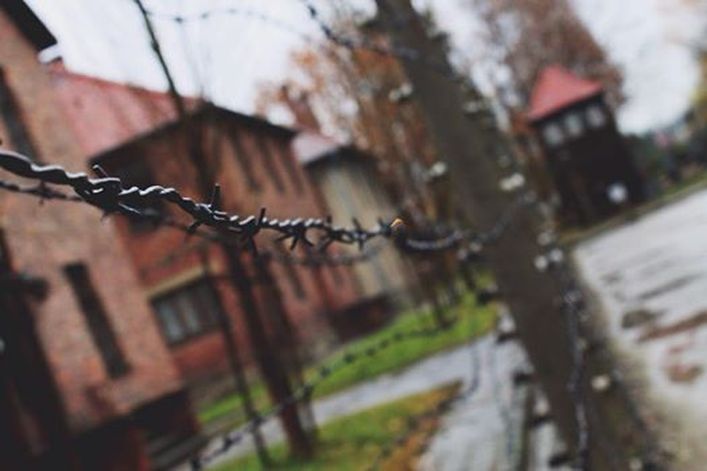

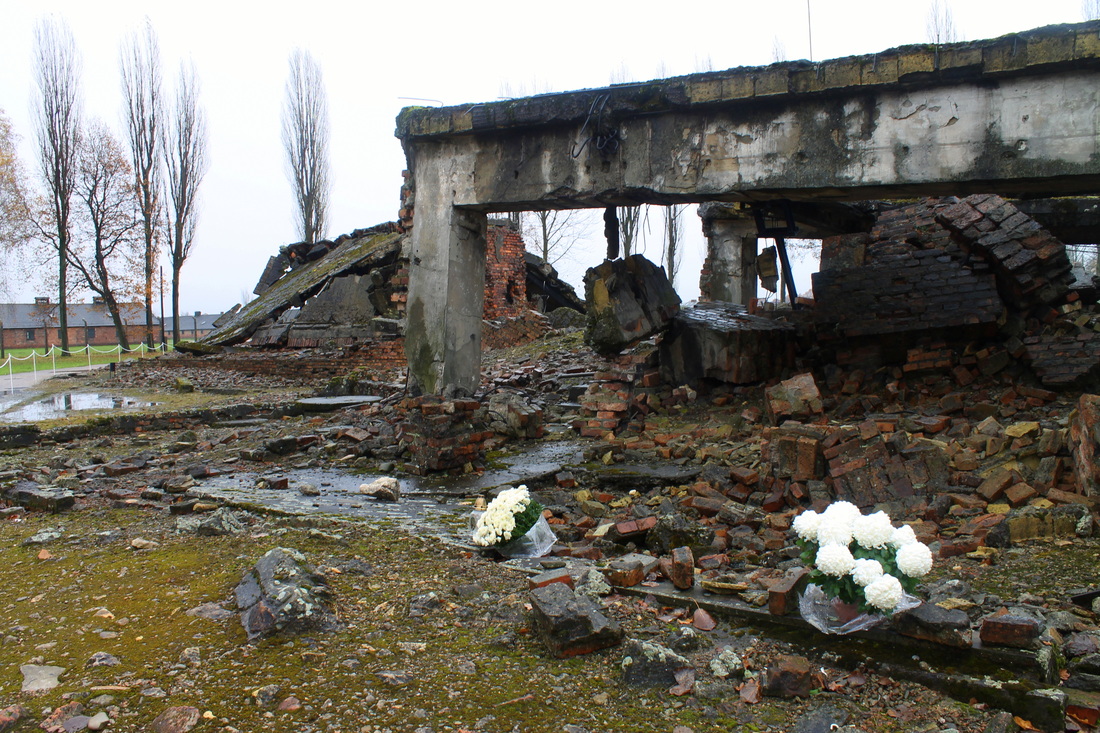
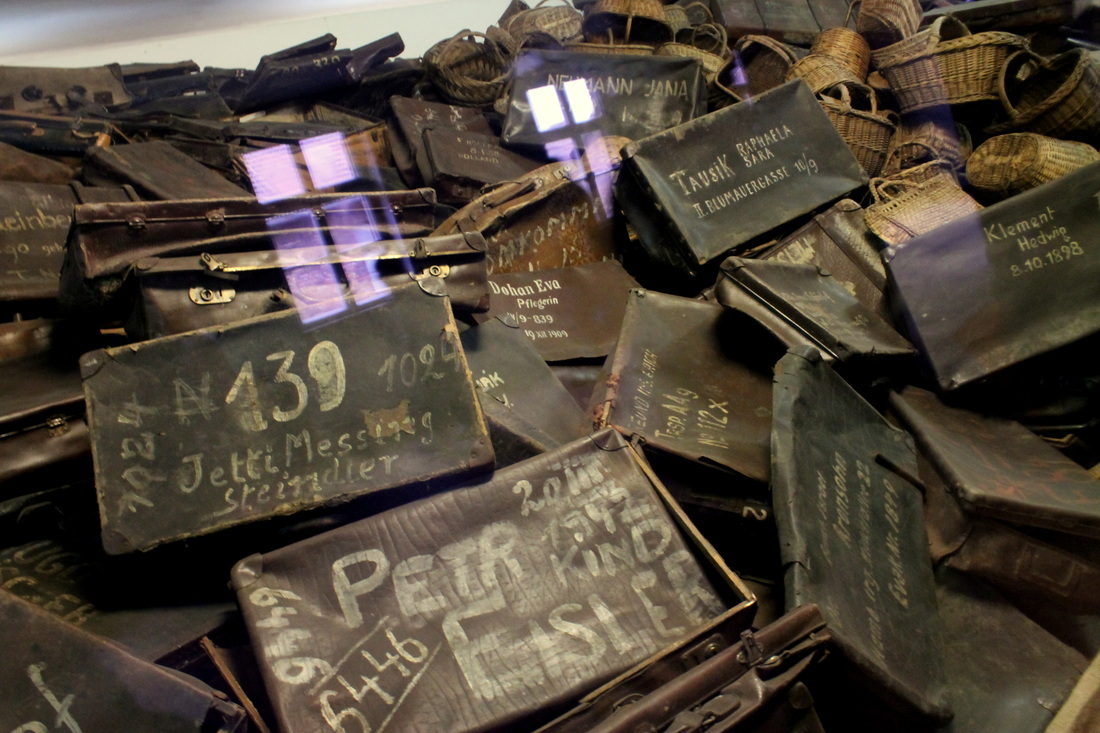
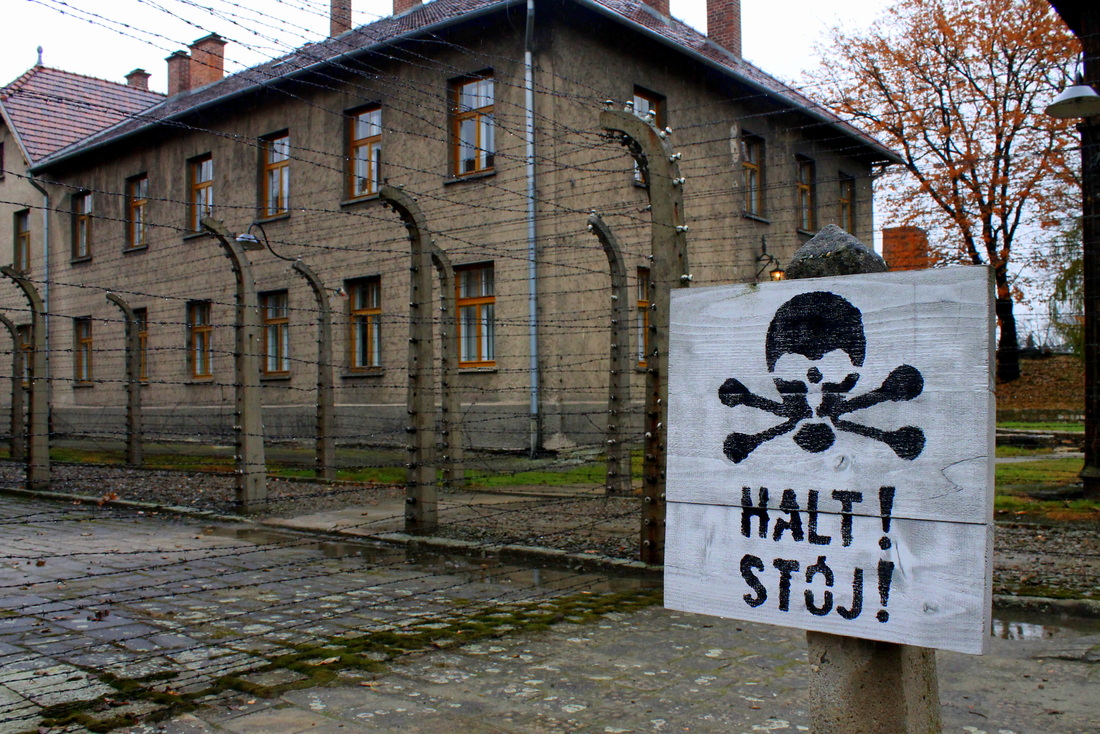
 RSS Feed
RSS Feed
